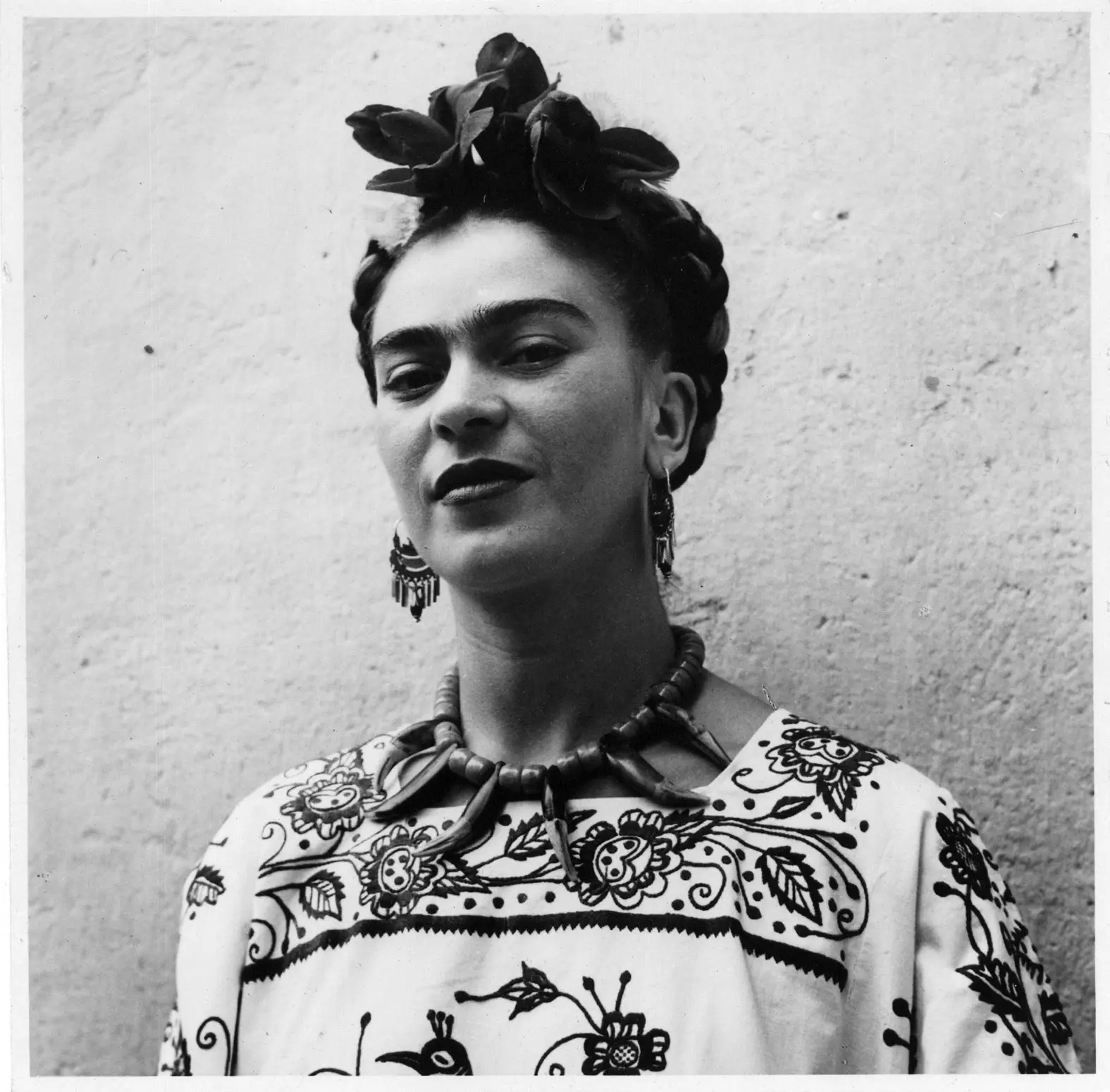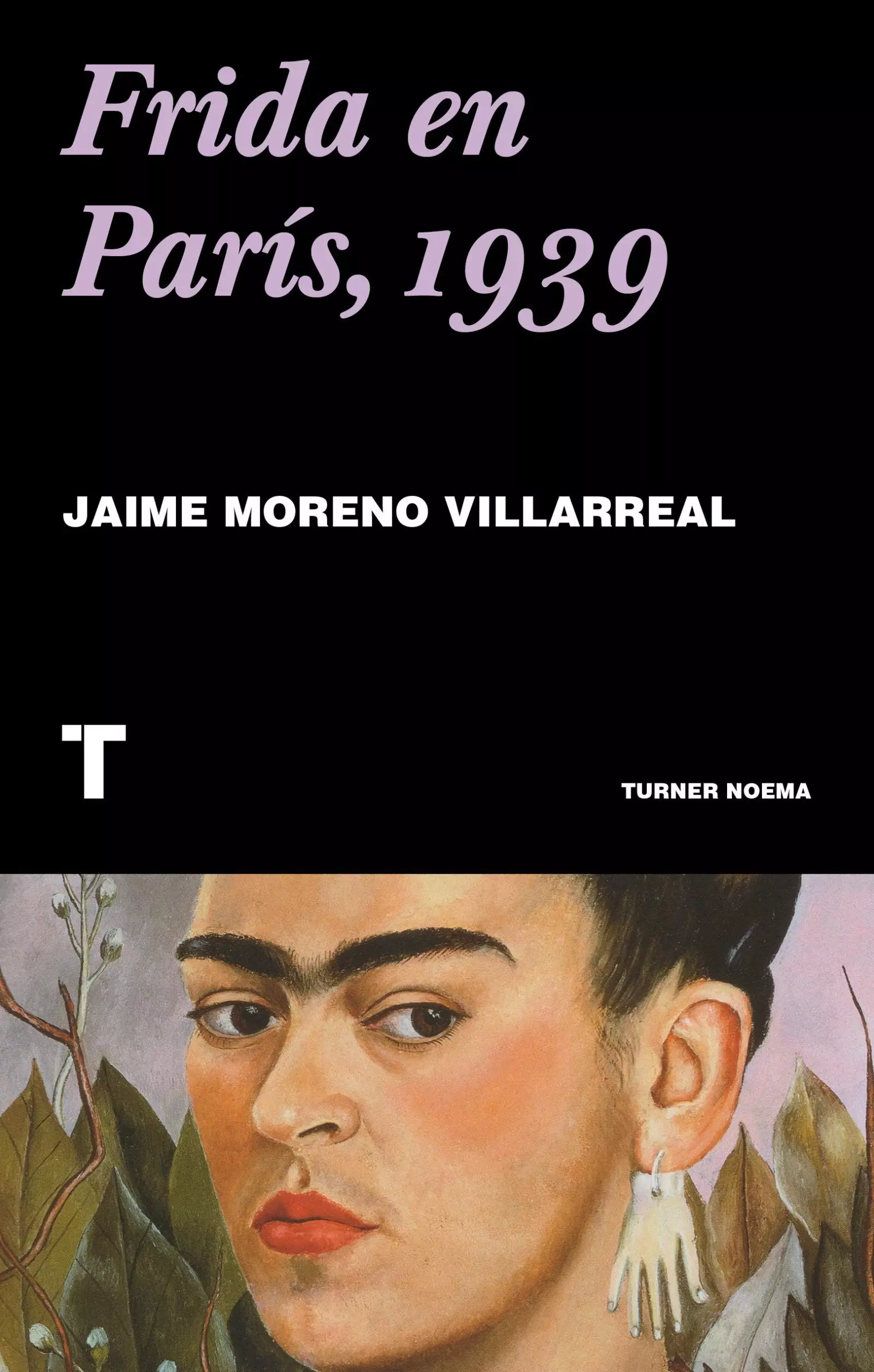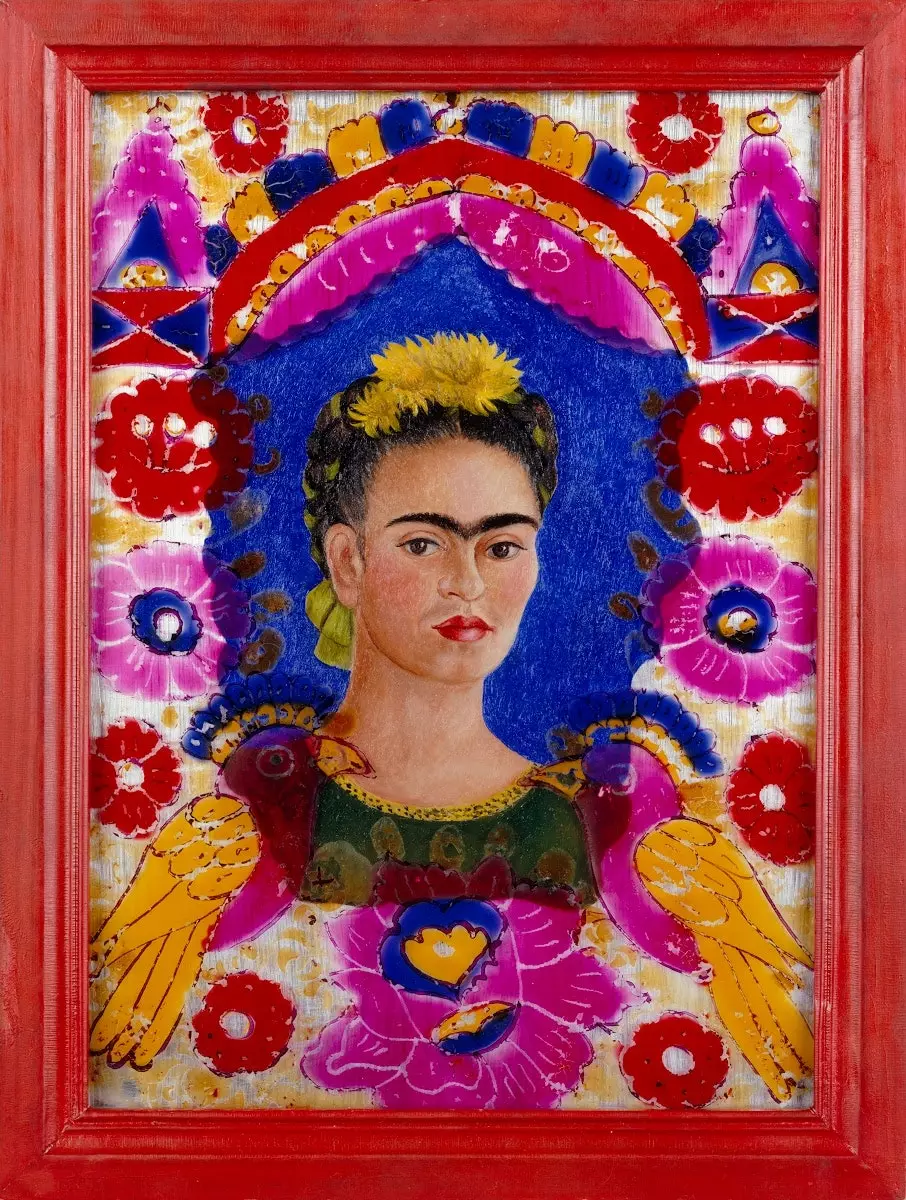Imagine the airport Paris in the thirties. A woman dressed in folkloric attire, brightly colored she tries to adjust a coat. The skirt sticks out from the bottom and the French locals and some merchants cannot identify where it comes from, but they suspect that it is from some exotic, tropical country.
She could be an expat or an actress on her way to a function somewhere nearby. She has the furrowest frown she's ever seen, the customs coordinator thinks to himself. She is angry, broken french with the help of a little Larousse and from her recriminatory tone two words stand out: "pictures" and "lost".
Frida went to Paris in 1939 invited by André Bretón. She crossed it to France from New York, odysseic. The SS-Paris ship, in the last, was on the verge of sinking and Frida feared for her life. It had to be well worth it in this hasty journey to be on the brink of abysses like the ones she had painted so much. In the port of La Havre they waited for her expectantly the photographer Dora Maar and Jacqueline Lamba, artist and wife of Breton, also an occasional lover of Kahlo.

Frida Kahlo, a universal icon.
Frida's arrival in Paris meant more than one broken promise. The first: they had lost the paintings that she herself had sent from New York for what was to be her first exhibition at the most avant-garde city in Europe. Where and how would What the water gave me or the Birth of her be?
The second, as she would inform him her host André Breton when she arrived, the gallery in question was not informed, they had not organized, they did not know. Excuses of a surrealist writer. The third and those that followed were a cavalcade of intimate and professional disappointments that would lead her to write that "Paris wasn't that bad."
“Since I got here things have not gone well for me. I got cranky because my exhibit wasn't ready. My paintings were laughing their heads off at the customs office because Breton hadn't even picked them up."
Frida in Paris (Turner, 2021)
The limbic state experienced by the artist in the French capital frustrates him. With the delay of her exposure she had already invested enough time to move among the intellectual circles of the city, but the feeling of stagnation she fits his clothes.
She does not understand why they have not warned her that the Galerie Ratton would not bear the costs . All that group of French artists whom she had welcomed in the residence that she shared with Diego in Mexico They had been so insistent. Also her husband: Words of encouragement to launch your European adventure now they screech.
Maybe he just wanted to keep her away, she senses. André Breton welcomes her in her residence on Rue Fontaine and despite her hospitable boasting, her attitude is disappointing to Kahlo. In an attempt to make the city more her own, she draws her own map in green ink: “all silence, all empty, all lands, all nights” cover the intelligible lines of what it is supposed to be the city of the Seine.
Frida is also afraid. She is afraid of being away from Diego and she knew that crossing the puddle heralded an inordinate distance.
The Breton residence it was a shack of a few meters no matter how much he and Jacqueline disguised its lackluster appearance by calling it a studio. She insists on stay somewhere near the Louvre and the Tuileries garden and she settles into the Hotel Regina for $70 a night.
A hotel middle bourgeoisie in which she is not registered under her name but as Mme. by Diego Rivera. The first thing she does is take a bath. Yes, more comfortable, but no news about the exhibition.
Frida considers crossing the Atlantic again, still in vain, with the pictures of her piggybacking her. Breton wants to stop it and looks for solutions. the answer will come by Marcel Duchamp and his ally Peggy Guggenheim. the colleague gallerist Pierre Colle maybe he would be willing to pay the monstrous amount of customs taxes – more than 2000 dollars – that imprisoned Frida's paintings in a concrete warehouse.

Cover of the book 'Frida in Paris, 1939'.
The exhibition finally opens on March 10 at Galerie Coelle two months after arrival. In Mexican, as it was titled Kahlo's work would not enjoy special prominence. So much endurance for so little. For Frida, who during the previous months she had devoted herself body and soul to generating a body of work sufficient to solo show, represents a setback. A pitcher of cold water after her New York conquest.
She occupies a small corner of the gallery between archaeological pieces, crafts and portraits of other artists. The central ambition of the project was to present a common vision of Mexican art, but his works coexisted with a craft fair. Frida was diluted, only three journalistic reviews were published after the inauguration, none of them includes photography. To top it off, they censored her A few bites.
She just she had sold her self portrait, today owned by Pompidou . A decaffeinated celebration in the roundabout with double Caribbean rum, nothing of tools.

Self portrait.
Political unrest was thriving at the end of the decade in the streets of Paris. Frida experienced a dull Paris , the art market on pause with the remnants of a depressed surrealism in the Le Cyrano coffee. The atmosphere of social concern determined that her great European leap was anecdotal.
And Frida, except with Diego, she didn't believe in second chances. As she cries out in one of her many epistles to him: “here I feel as far away as in a desert and I want to return home”. She loved that yes at modest flower vendors who drank white wine at lunchtime, the roasted chestnut stalls, the markets, the delicatessen, the baguettes, the foie and so many melted cheeses.
From Paris she stays with the vision of The Venus de Milo, amputee she said, like her. The Shocking perfume that she was given in the boutique Schiaparelli, two blonde dolls from the flea market, a black and white photograph shot by her confidante Dora Maar and a finished painting, The suicide.
She got distracted in Cabaret La Cabane Cubaine , Walking by The Sorbonne, deciphering startled conversations in a language she did not understand well in Les Deux Magots , on the Michel Petitjean's loft and in the arms of Alice Paalen and walking with Jacqueline down the artistic hive of rue Départ. She returned to the uncertain arms of Diego, to the eager American lovers. To the blues, ceruleans and greens. To his corner of oil paintings and easels in front of San Ángel. She trembled back to Coyoacan from the city of sad sky.
